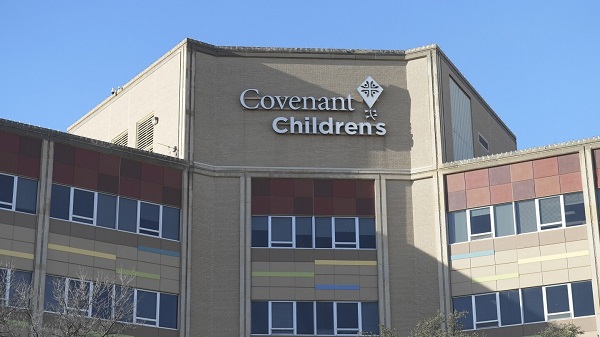Alberta
Edmonton Police Service is highlighting the risks of finding love online

The victim of an online romance scam is sharing his story in hopes of preventing more people from being taken advantage of by scammers. Online romance scams are a lucrative business- in 2018, the Edmonton Police Service investigated 11 incidents of romance scams totalling an overall reported loss of $1,115,219.74.
Con was in the hospital when he received a message from a woman who said she had seen his dating profile. He was happy to have the company while he was confined to the hospital bed – even if it was just over the phone.
Sample of images sent to portray the woman’s online profile
She said she was a United States citizen on an overseas contract as a computer civil engineer. She was a single mom; her son was nine-years-old. Eventually, she would say that she “fell in love with a guy from the internet”.
Months into their chats, the requests for money began; she said the camera on her phone was broken but she couldn’t afford to fix it, so she needed $600 to replace it. Con denied her request so she stopped contacting him, but months passed and they started talking again. She asked him for money once again, telling him she was relying on him to get her and her son to the States. So he gave what he could towards a new phone- $100. It wasn’t enough, so she stopped talking to him.
Nearly a year later, she asked him if he still loved her; the continued to talk for a couple of weeks and then she told him she was laid off and needed help. He told her to go to the U.S. Embassy for help, but she admitted that it was an illegal work contract. She needed to get home, but she didn’t have enough; she was a mere $1500 short.
The next day, ticket prices went up. He paid the difference. And then her son was diagnosed with malaria. Shortly after, they were in a collision and had hospital bills – she even sent x-rays. But she had money back home; she just needed help paying the hospital bills in order to be released from the hospital. Once she got home she would be able to pay him back. She even “proved” her financial state by sending a picture of her bank accounts in the U.S.A; she just couldn’t access them while overseas.
Sadly, Con’s dream of having a family was used against him by fraudsters. When one of his banks interfered and the Edmonton Police Service investigated his case, this romance scam came to $143,000.
When asked why he sent the money, he pauses… “Hope that it would be real. Having her and her kid. Money isn’t important. This is; having someone else in the house besides me.”
Protect Yourself
It is important to remember that romance scammers do this for a living – it’s their job and it can be very profitable.
“It’s absolutely heartbreaking that these scammers are taking someone’s desire for happiness and using it against them,” Detective Linda Herczeg stated. “They commit all of their time into these scams because it’s their job and it’s lucrative.”
Websites and apps are constantly used for matchmaking, friendship building, and networking, but users should be aware of the potential risks.
Signs that a social media or dating profile user is a scammer
- They ask you for money.
- They profile you and tell you everything you want to hear.
- They will find out what you are looking for in a relationship and create events that will play on your emotional to get you to send money – sick children, airline tickets to come be with you/marry you so you can be a family.
- They groom you for as long as it takes (days, months, years) to get your money by being very attentive, lavishing you with attention, compliments and tell you that they love you. Usually they profess their love early in the relationship.
- They are always available because it is usually a group of individuals that are sending you messages, working off a script.
- The images of your “loved one” will be stolen off the internet.
- Your “loved one” will rarely have a voice conversation with you or have a live conversation via FaceTime or Skype.
- Your “loved one” will always have an excuse why they cannot meet you.
- They will always find a reason for you to send them more money.
You can find more information on online scams and online dating safety tips on the EPS website.
The EPS reminds citizens that fraud prevention is continuous – we need to recognize it through continual education, report it, and stop it. We ask that you share this information with those in your life who may be a target for romance scams.
If you are a victim of any fraud in Edmonton, please contact the EPS at 780-423-4567 or #377 from a mobile device. In other jurisdictions, contact the local RCMP.
Alberta
Made in Alberta! Province makes it easier to support local products with Buy Local program

Show your Alberta side. Buy Local. |
When the going gets tough, Albertans stick together. That’s why Alberta’s government is launching a new campaign to benefit hard-working Albertans.
Global uncertainty is threatening the livelihoods of hard-working Alberta farmers, ranchers, processors and their families. The ‘Buy Local’ campaign, recently launched by Alberta’s government, encourages consumers to eat, drink and buy local to show our unified support for the province’s agriculture and food industry.
The government’s ‘Buy Local’ campaign encourages consumers to buy products from Alberta’s hard-working farmers, ranchers and food processors that produce safe, nutritious food for Albertans, Canadians and the world.
“It’s time to let these hard-working Albertans know we have their back. Now, more than ever, we need to shop local and buy made-in-Alberta products. The next time you are grocery shopping or go out for dinner or a drink with your friends or family, support local to demonstrate your Alberta pride. We are pleased tariffs don’t impact the ag industry right now and will keep advocating for our ag industry.”
Alberta’s government supports consumer choice. We are providing tools to help folks easily identify Alberta- and Canadian-made foods and products. Choosing local products keeps Albertans’ hard-earned dollars in our province. Whether it is farm-fresh vegetables, potatoes, honey, craft beer, frozen food or our world-renowned beef, Alberta has an abundance of fresh foods produced right on our doorstep.
Quick facts
- This summer, Albertans can support local at more than 150 farmers’ markets across the province and meet the folks who make, bake and grow our food.
- In March 2023, the Alberta government launched the ‘Made in Alberta’ voluntary food and beverage labelling program to support local agriculture and food sectors.
- Through direct connections with processors, the program has created the momentum to continue expanding consumer awareness about the ‘Made in Alberta’ label to help shoppers quickly identify foods and beverages produced in our province.
- Made in Alberta product catalogue website
Related information
Alberta
Province to expand services provided by Alberta Sheriffs: New policing option for municipalities

Expanding municipal police service options |
Proposed amendments would help ensure Alberta’s evolving public safety needs are met while also giving municipalities more options for local policing.
As first announced with the introduction of the Public Safety Statutes Amendment Act, 2024, Alberta’s government is considering creating a new independent agency police service to assume the police-like duties currently performed by Alberta Sheriffs. If passed, Bill 49 would lay additional groundwork for the new police service.
Proposed amendments to the Police Act recognize the unique challenges faced by different communities and seek to empower local governments to adopt strategies that effectively respond to their specific safety concerns, enhancing overall public safety across the province.
If passed, Bill 49 would specify that the new agency would be a Crown corporation with an independent board of directors to oversee its day-to-day operations. The new agency would be operationally independent from the government, consistent with all police services in Alberta. Unlike the Alberta Sheriffs, officers in the new police service would be directly employed by the police service rather than by the government.
“With this bill, we are taking the necessary steps to address the unique public safety concerns in communities across Alberta. As we work towards creating an independent agency police service, we are providing an essential component of Alberta’s police framework for years to come. Our aim is for the new agency is to ensure that Albertans are safe in their communities and receive the best possible service when they need it most.”
Additional amendments would allow municipalities to select the new agency as their local police service once it becomes fully operational and the necessary standards, capacity and frameworks are in place. Alberta’s government is committed to ensuring the new agency works collaboratively with all police services to meet the province’s evolving public safety needs and improve law enforcement response times, particularly in rural communities. While the RCMP would remain the official provincial police service, municipalities would have a new option for their local policing needs.
Once established, the agency would strengthen Alberta’s existing policing model and complement the province’s current police services, which include the RCMP, Indigenous police services and municipal police. It would help fill gaps and ensure law enforcement resources are deployed efficiently across the province.
Related information
-

 2025 Federal Election2 days ago
2025 Federal Election2 days agoRCMP Whistleblowers Accuse Members of Mark Carney’s Inner Circle of Security Breaches and Surveillance
-

 Also Interesting2 days ago
Also Interesting2 days agoBetFury Review: Is It the Best Crypto Casino?
-

 Autism2 days ago
Autism2 days agoRFK Jr. Exposes a Chilling New Autism Reality
-

 COVID-192 days ago
COVID-192 days agoCanadian student denied religious exemption for COVID jab takes tech school to court
-

 2025 Federal Election2 days ago
2025 Federal Election2 days agoBureau Exclusive: Chinese Election Interference Network Tied to Senate Breach Investigation
-

 International2 days ago
International2 days agoUK Supreme Court rules ‘woman’ means biological female
-

 2025 Federal Election2 days ago
2025 Federal Election2 days agoNeil Young + Carney / Freedom Bros
-

 Health2 days ago
Health2 days agoWHO member states agree on draft of ‘pandemic treaty’ that could be adopted in May







